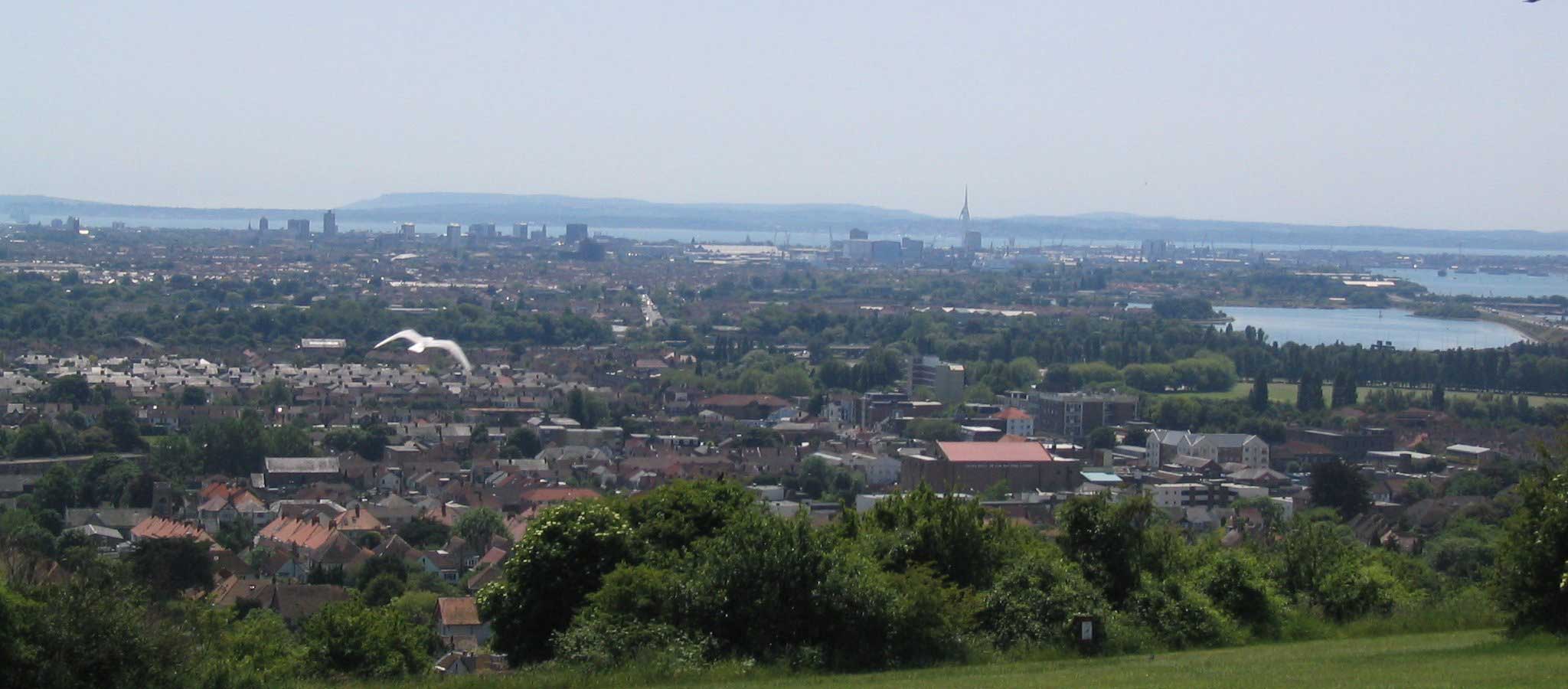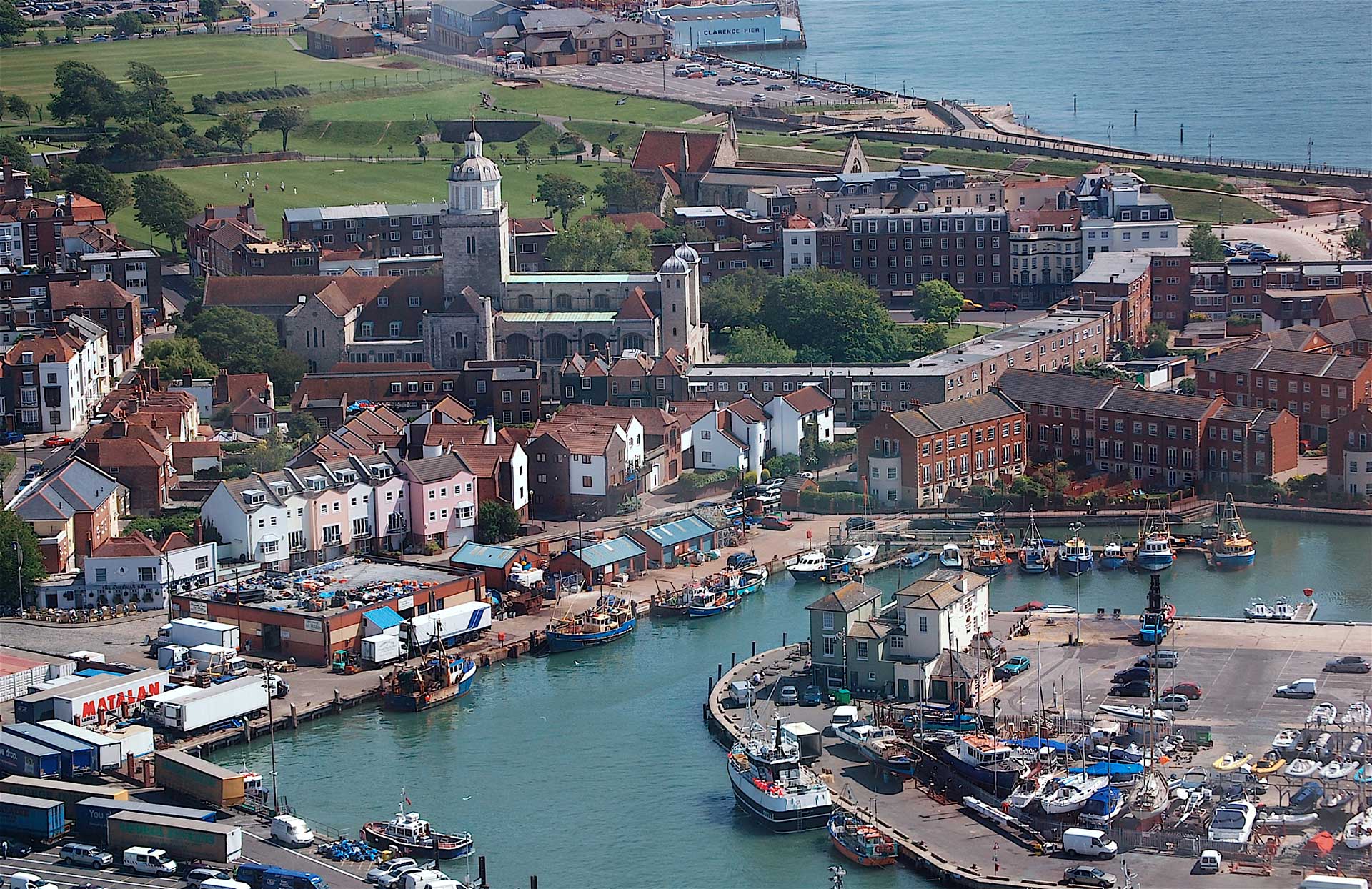

 Urbanization
Urbanization
The City of Portsmouth is located on Portsea Island bounded to the East by Langstone Harbour, to the West by Portsmouth Harbour and to the South by the Solent and the Isle of Wight. Originally settlement was concentrated on the site now occupied by Portchester Castle at the Northern end of Portsmouth Harbour and first enters the historical record as a Roman coastal fortress and port. The first major development on Portsea Island did not occur until 1194 when King Richard 1 (the Lionheart) granted a charter for the establishment of a settlement.
The sea, and particularly the Royal Navy, has dominated the development of Portsmouth from its foundation in the 12th Century, through the establishment of the Naval Dockyard in 1496 and its expansion during the 17th Century. Whilst the decline of the Royal Navy following the end of the Cold War has reduced the importance of the Navy and Dockyard to Portsmouth, it remains, along with tourism, one of the primary employers in the city.
Economically the city has seen a remarkable growth in employment attributable to the University of Portsmouth, the expansion of the ferry-port, and employment in high technology industries.
The City of Portsmouth has been a unitary authority since April 1997, prior to this date certain key administrative functions of the city were shared with Hampshire County Council. Whilst largely independent for administrative purposes the city remains in the county of Hampshire. Portsmouth had a population of 189 110 people in 1998, in mid 2019, the estimated population reached 214 905 people (ONS population estimates mid year), a growth by 13.7 percent between 1998 and 2019 Portsmouth administers an area of approximately 40.4 square kilometre which means Portsmouth is the most densely populated district in Great Britain outside of Inner London with respectively 4 680.9 and 5 319.4 people per square kilometre in 1998 and 2019..
The local economy
Portsmouth has suffered more than many other areas over the last 20 years of the 20th Century as the UK has effectively de-industrialised and moved further towards a service based economy. The decline of the defence sector, especially since the end of the Cold War, has seen a large reduction in employment in the armed services, the dockyard and associated defence industries. New employment growth has tended to be concentrated within the relatively low-paid, often part-time tourism and retail sectors.
Employment in Portsmouth in 1996 was dominated by the service sector which accounted for 79.3 per cent of all employment (Annual Employment Survey 1996). Within the service sector public administration, education and health provided the largest volume of total employment accounting for approximately 31.9% of total employment, tfollowed by distribution, hotels and catering (20.5%) and banking, finance and insurance (17.7%). Manufacturing employment was important to the local economy providing 17.3% of all local employment.
Compared to other south coast cities Portsmouth has a strong relative concentration of employment in the manufacturing sector (8.1% in 2009, 8.4% in 2019) and is above the Great Britain average in 2019 (8.7 in 2009, 7.8% in 2019).
In 2019, they were 106 000 employee jobs in Portsmouth, a growth of 4.95% between 2009 and 2018. The service sector is still dominant in terms of employment, representing 86.2% of total employment, of which public administration, education and health (32.8%), distribution, hotels and restaurants (24.0%), banking, financial and insurance (16.8%).
Business and commerce
Major employers in the city are primarily engaged in high technology manufacture or service sector functions, many of which are either still engaged in, or have historically been involved with, defence related production and development. Portsmouth is the UK headquarter for IBM (computers), it is also home to GEC (electronics and telecommunications), Alenia Marconi Systems (electronics), BAE (marine construction), Raymarine (marine electronics), De La Rue Systems (cash machines and EFTPOS equipment), and Panasonic GSM (mobile personal telecommunications).
Tourism
Portsmouth also markets itself as a tourist destination The Flagship of Maritime England and is home to HMS Victory, HMS Warrior, the Mary Rose and the Royal Naval Museum all situated in the historic dockyard. The city is also home to the Royal Marines Museum, Southsea Castle (a Henrician Device Fort), the D-Day Museum and Sea Life Centre all of which are located in Southsea, the resort part of Portsmouth. The Renaissance of Portsmouth Harbour has résulted in a revival of activities in the harbour, including the construction of the Spinnaker Tower and the redevelopment of the quays. The port has opened up to the city, a trend seen in major port cities around the world. The port is now one of the city's major tourist attractions..
Education
The largest educational establishment within the city is the University of Portsmouth (generating £300 million to the local economy in 2017/2018) The University includes the Portsmouth School of Art, Design and Media and further education is provided by Highbury College, the third largest college of its type in the South East of England. With over 2 600 staff and 25 000 students in 2018/2019, the University of Portsmouth is a major economic player in the city.
Communications
Portsmouth has a variety of sea-based transport links together with good road and rail links to the rest of the country. There are regular ferry services to the Isle of Wight for both passengers and vehicles, passenger services to Hayling Island and Gosport, services to Jersey and Guernsey and international services to France (Le Havre, Caen, Cherbourg, St Malo) and Spain (Bilbao, Santander). The volume of traffic, both for passengers and freight makes Portsmouth the second busiest port in the country.
Road connections from Portsmouth to the rest of the UK are excellent as the city has easy access to the main south coast trunk road, the A27 (running in various guises from Kent in the East to Devon in the West), the A3 to London via Guildford and the M3 (Basingstoke, the M25 and London) and A34 (Newbury, the M4, Oxford and the Midlands) accessed via the M27 Portsmouth to Southampton. Travel times (depending on road conditions) are relatively swift with London being accessible in one hour 25 minutes, Birmingham in two hours 50 minutes and Bristol in one hour 55 minutes. Access to the Channel Tunnel is possible in between two and three hours.
Rail links between Portsmouth and the rest of the UK are favourable, London is accessible in one hour 20 minutes, Southampton in 35 minutes and Birmingham in four hours 30 minutes.
top

















